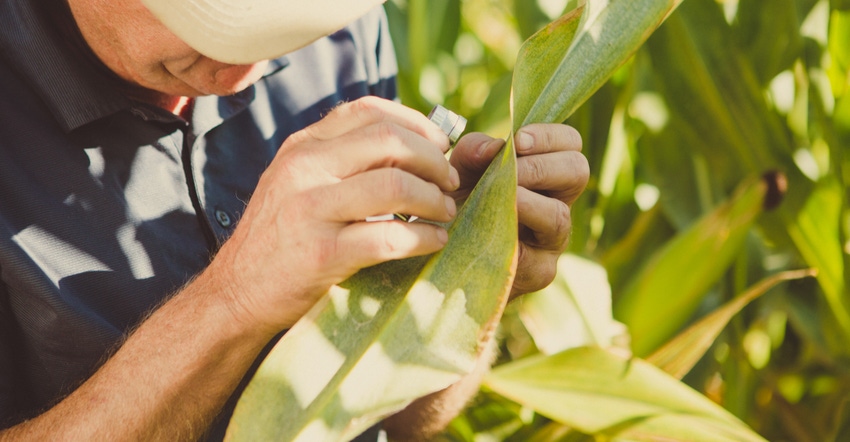May 1, 2019

Sponsored Content
Helena Agronomists are seeing a startling trend in corn, cotton and soybean tissue samples across the Southern United States. From New Mexico to Alabama, 46% of crops tested are low in one of the most important nutrients – potassium (K).
“The importance of potassium to a growing plant cannot be understated,” stressed Derek Emerine, Agronomist in Helena’s Southern Business Unit. “It has a direct impact on the yield and quality of the crop we’re trying to harvest.”
Potassium plays a critical role in a variety of complex plant functions. It’s necessary for enzyme activation, translocation of sugars, protein synthesis, and the movement of water and nutrients throughout the plant. To put it simply, these are the steps plants go through to set yield potential and develop value.
“If you’re a corn grower, you’ll see the benefit of potassium in your stalk strength. If you’re a cotton grower, you’ll get higher fiber quality,” explained Emerine. “When it comes to soybeans, we see a much higher rate of uptake than other crops, and that shows us how important potassium is to plant health.”
Without potassium, crops are subject to water loss and more prone to drought stress. They are more susceptible to disease, and suffer from poor performance during critical growth stages. Helena uses Extractor®, its exclusive tissue analysis program, to measure nutrient levels, understand the condition of the plant, and make in-season adjustments.
“What Extractor shows us is that you can fertilize correctly, and potassium levels can look great in the soil. But, when your crop starts reproducing, and it’s performing well, the soil can’t keep up with the demand, and you have to supplement potassium,” said Emerine.
The need for potassium is at its highest during the flowering and fruiting stage when the crop is making the grain, developing soybeans, or filling the cotton boll with lint. Up until this point, soil potassium is enough. However, at reproduction, when demand is skyrocketing, root activity is decreasing. Since soil potassium is taken up early with water, foliar K can provide a solution when there is a greater chance of limited moisture late in the season. Other factors in the soil such as high pH and elevated levels of calcium and magnesium can also interfere with uptake, making the need for a foliar supplement even greater.
Once a tissue sample reveals a potassium deficiency, Helena works with the grower to create a foliar nutritional plan to correct the problem. Brad Bush, Product Specialist in Helena’s Southern Business Unit, said the goal is not to replace dry fertilizer, but to supplement it with the right product at the right time. He recommends Coron® Metra 10 B or K-Leaf® Versa, new foliar nutritionals from Helena that supply a safe source of potassium with added efficiency and tank-mix compatibility.
“We try to recommend nutritional products that will fit easily into the foliar applications you’re already making,” said Bush. “By adding a nutritional to the tank, you can satisfy that hunger for K when it matters most without an extra trip across the field.”
Reversing the potassium deficiency trend won’t happen overnight. It requires a long-term commitment to managing in-season nutrition. Now that we have the ability to ask our crops what they need, all we have to do is listen. To get started, contact your local Helena representative to put Extractor tissue sampling to work in your field this season, and visit Helena online to learn more about Managing In-Season K Demand.
About the Author(s)
You May Also Like




